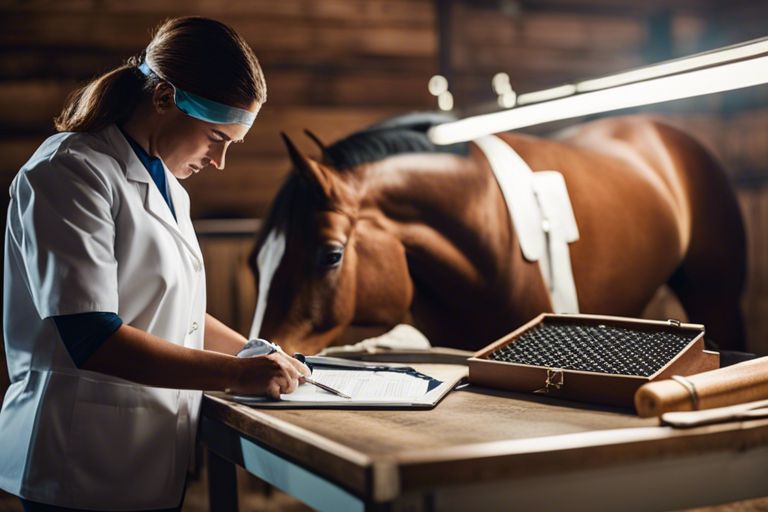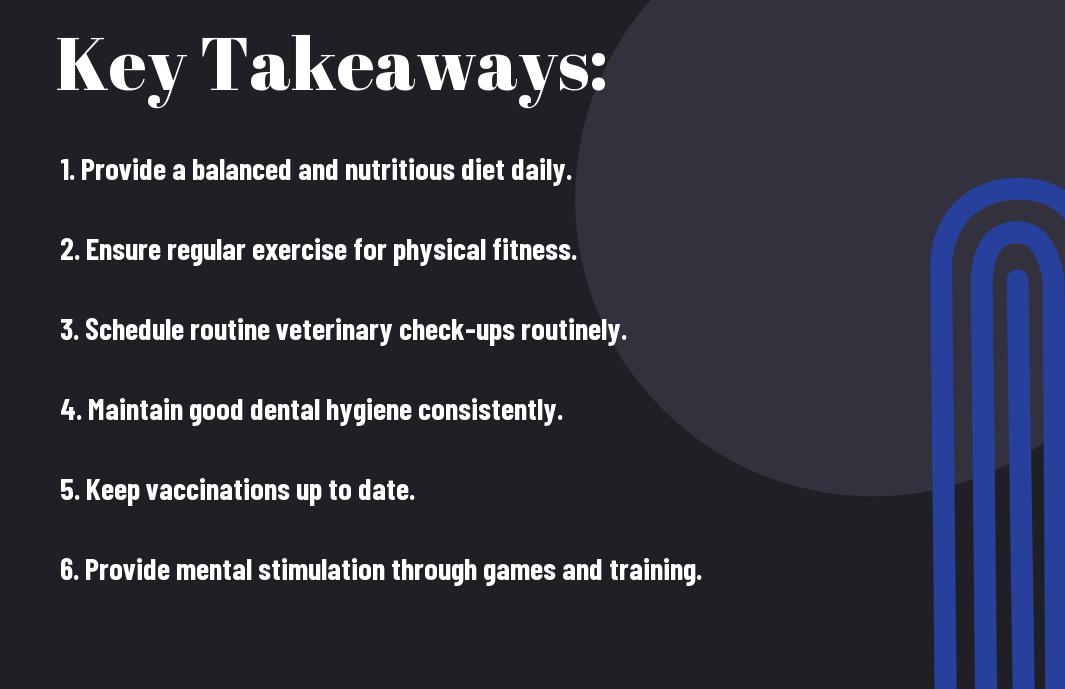Horse owners, ensuring your horse’s health is crucial. Regular health inspections can help catch potential issues early. To conduct a thorough health inspection, start by observing your horse’s behavior, check your horse’s vital signs, evaluate your horse’s body condition, and inspect your horse’s hooves. By learning how to properly assess your horse’s health, you can prevent serious issues and maintain your horse’s well-being.
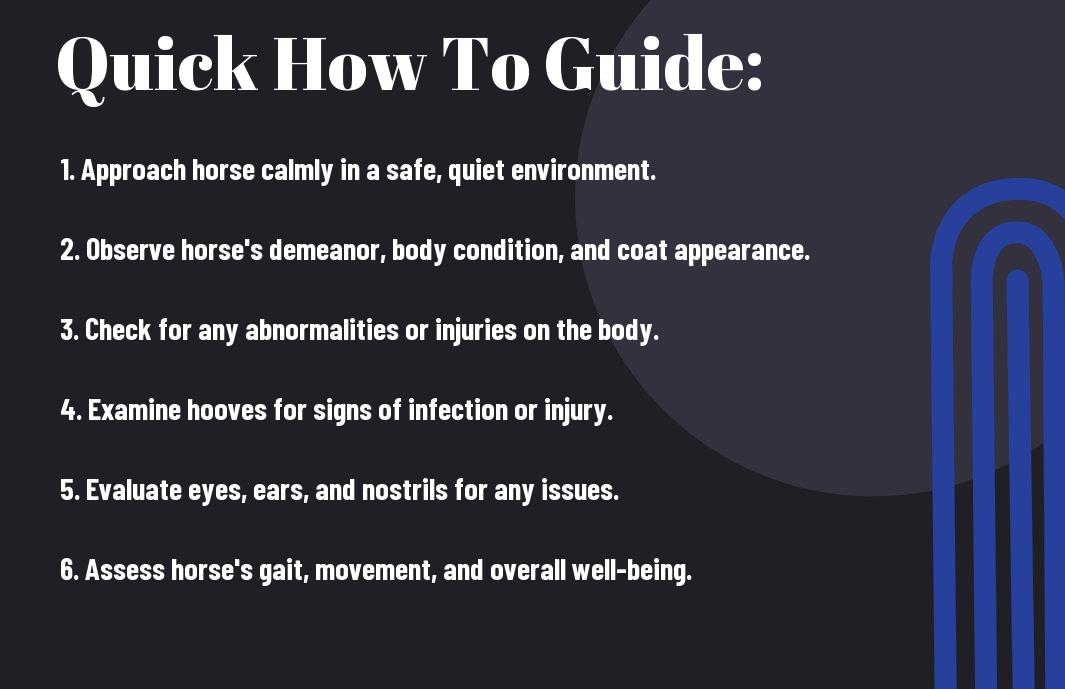
Preparation is Key
Gathering Essential Equipment
The first step in conducting a thorough horse health inspection is gathering all the necessary equipment. Clearly, you will need a hoof pick, a soft brush, a thermometer, a stethoscope, a flashlight, and a notebook to record your findings. Be sure to have all these items easily accessible before starting the inspection.
Familiarizing Yourself with the Horse’s History
Before beginning the health inspection, take some time to familiarize yourself with the horse’s history. Yourself, understand any previous health issues, medication the horse is currently on, as well as any specific behaviors or habits the horse may have. It is important to have this background information to identify any changes or abnormalities during the inspection.
It is crucial to know if the horse has had a previous injury, surgery, or illness that could affect its current health status. By understanding the horse’s history, you are better prepared to conduct a thorough examination and address any potential concerns.
Understanding the Importance of a Clean Environment
If you are conducting a horse health inspection, clean surroundings are vital. Ensure that the area where you will be examining the horse is free of debris, well-lit, and devoid of any unnecessary distractions. A clean environment not only ensures the horse’s comfort but also makes it easier for you to spot any irregularities during the inspection.
Visual Inspection Tips
If you want to conduct a thorough horse health inspection, it’s important to pay close attention to visual cues. Here are some tips to help you perform a comprehensive visual assessment of your horse:
Observing the Horse’s Posture and Body Condition
Tips for observing the horse’s posture and body condition include looking at how the horse stands and moves. Watch for any signs of stiffness, lameness, or discomfort. Assess the overall body condition by checking for muscle development, fat coverage, and any abnormalities in body shape or size. These visual cues can provide important insights into your horse’s overall health and well-being.
This part of the inspection can help you spot issues early on and address them promptly. Monitoring your horse’s posture and body condition regularly is important for maintaining their health and preventing potential problems from worsening.
Identifying Signs of Illness or Injury
Inspection of your horse for signs of illness or injury is crucial for early detection and treatment. Look for abnormalities such as swelling, cuts, bruises, or unusual lumps under the skin. Pay attention to your horse’s demeanor and behavior, as changes in attitude or appetite can also indicate health issues. This visual examination can help you catch any potential problems before they progress.
Understanding the typical signs of illness or injury in horses can help you act quickly and effectively when necessary. Regularly checking for visual clues can ensure that your horse receives the care they need in a timely manner.
Examining the Coat, Skin, and Hooves
While conducting a visual inspection, make sure to examine your horse’s coat, skin, and hooves carefully. Look for any abnormalities such as cuts, sores, rashes, or hair loss. Check the hooves for signs of cracks, thrush, or other abnormalities. The condition of the coat, skin, and hooves can provide valuable information about your horse’s overall health.
This part of the inspection is crucial as issues with the coat, skin, or hooves can indicate underlying health problems that need to be addressed. Regular grooming and maintenance can help prevent issues and keep your horse healthy and comfortable.
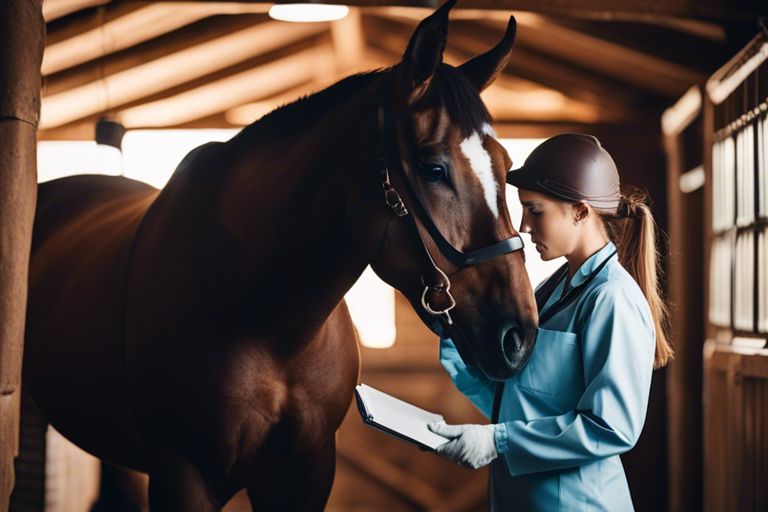
Hands-On Inspection Factors
Your ability to conduct a thorough hands-on inspection of your horse plays a crucial role in maintaining their health and well-being. This step-by-step process allows you to detect any potential issues early on and address them promptly. **Taking the Horse’s Temperature and Pulse**
Taking the Horse’s Temperature and Pulse
**Horses** have a higher body temperature range than humans, typically between 99-101.5 degrees Fahrenheit. It’s important to use a equine-specific thermometer to take your horse’s temperature rectally. Insert the thermometer into the rectum and leave it in place for about a minute to get an accurate reading. Additionally, **knowing** your horse’s resting pulse rate, which is normally between 28-44 beats per minute, can provide valuable insights into their overall health.
**Checking the Eyes, Ears, and Nose**
Little details such as the **clarity** of your horse’s eyes, the **symmetry** of their ears, and the **moisture** in their nose can indicate their health status. Clear, bright eyes free of discharge, erect and symmetrical ears, and a slightly moist nose are signs of a healthy horse. **Any** abnormalities in these areas could be a cause for concern and warrant further investigation.
**Inspecting the Mouth and Teeth**
Inspecting the Mouth and Teeth
An **overview** of your horse’s mouth and teeth can reveal a lot about their overall health. Check for any **sharp points**, **uneven wear**, or **abnormalities** in their teeth that may affect their ability to chew properly. Additionally, inspecting the **condition** of their gums and the **foul** odor of their breath can help identify potential dental issues. Regular dental check-ups and floating (filing down sharp points) are important for maintaining good oral health in horses.
Ears can also provide valuable insights into your horse’s health. Regularly check for any signs of **ear** infections, irritation, or excessive wax buildup. Keeping your horse’s ears clean and free of debris can help prevent potential issues and ensure their overall well-being.
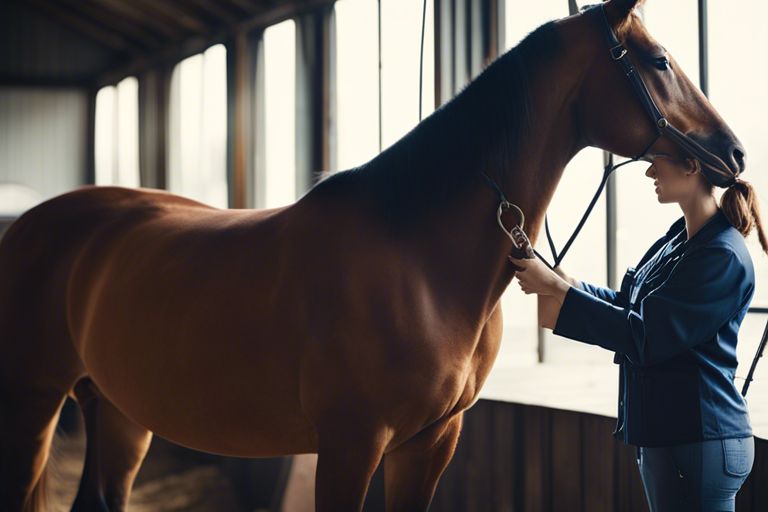
Movement and Mobility Assessment
Many aspects of a horse’s health can be assessed by observing its movement and mobility. This includes examining the horse’s gait, flexibility, range of motion, and signs of lameness or discomfort.
Observing the Horse’s Gait and Movement Patterns
Assuming you are observing the horse on a flat, hard surface, watch how it moves at a walk, trot, and canter. Look for symmetry in its movement, smooth transitions between gaits, and any irregularities or stiffness.
Evaluating Flexibility and Range of Motion
On evaluating flexibility and range of motion, gently flex and extend each of the horse’s legs to assess the joints and muscles. Pay attention to any resistance, stiffness, or unevenness in the horse’s movements.
It’s important to understand that good flexibility and range of motion are crucial for a horse’s overall performance and well-being. Limited flexibility or range of motion can indicate underlying issues that may need to be addressed.
Identifying Signs of Lameness or Discomfort
Assuming you suspect lameness or discomfort, look for subtle signs such as favoring one leg, unusual head bobbing, stiffness, or resistance during exercise. These signs may indicate pain or physical issues that require attention.
This assessment is critical as addressing lameness or discomfort early can prevent further injury or long-term consequences for the horse’s health and performance. Regular mobility assessments can help you track changes in your horse’s movement patterns and address any issues promptly.
Vital Signs and Health Indicators
Monitoring Respiratory Rate and Quality
All horses have similar vital signs, but individual baselines can differ, so it’s crucial to establish what’s normal for your horse. If your horse is calm and resting, monitor its respiratory rate by watching the flank rise and fall. Normal rates should be between 8-16 breaths per minute for adult horses. Additionally, assess the quality of breathing – it should be quiet and effortless, with no signs of distress like flared nostrils or heaving sides.
Assessing Digestive Health and Manure Quality
With regards to digestive health, pay attention to your horse’s manure quality and frequency of bowel movements. A healthy horse should pass manure several times a day. The manure should be well-formed, moist, and without excess mucus or blood. Any changes in frequency, consistency, or the presence of foreign objects warrants further investigation by a veterinarian.
Understanding your horse’s normal habits and patterns is vital in detecting early signs of digestive upset. Keep track of how much your horse eats, drinks, and eliminates daily. Small changes can signal underlying health issues that may require attention.
Evaluating Hydration Levels and Urine Output
With hydration being a key component of overall health, you can assess your horse’s hydration levels by testing its skin elasticity and capillary refill time. Dehydration can lead to serious health complications, so it’s important to ensure your horse has free access to clean, fresh water at all times. Plus, monitoring urine output can also provide insights into your horse’s hydration status and kidney function. Normal urine output should be straw-colored and free-flowing.
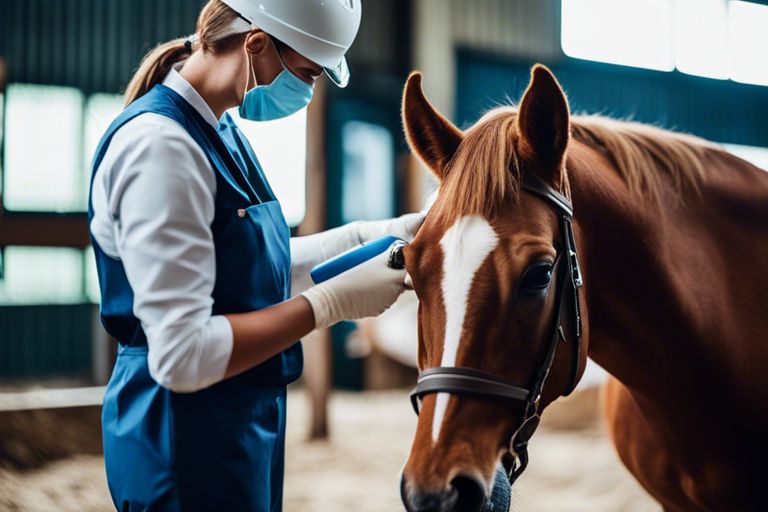
Common Health Issues to Look Out For
Recognizing Signs of Colic and Other Digestive Issues
Issues related to the digestive system can be serious for your horse. **Recognizing** signs of colic, such as pawing at the ground, rolling, looking at the abdomen, or loss of appetite, is crucial. Other digestive issues to look out for include diarrhea, constipation, and signs of discomfort during bowel movements. If you notice any of these signs, it’s necessary to contact your veterinarian immediately.
Identifying Respiratory Problems and Infections
**Respiratory** problems can affect your horse’s overall health and performance. Watch out for symptoms such as coughing, nasal discharge, difficulty breathing, or wheezing. These could be signs of infections like equine influenza or pneumonia. It’s important to monitor your horse’s respiratory health regularly and seek veterinary advice if you notice any concerning signs.
It’s crucial to keep your horse’s living environment clean and well-ventilated to prevent respiratory issues. Dust, mold, and poor ventilation can contribute to respiratory problems, so make sure your horse’s stable is clean and airy.
Detecting Skin Conditions and Parasite Infestations
**Recognizing** skin conditions like **mange**, ringworm, or rain rot is vital for your horse’s well-being. Check your horse regularly for any signs of skin irritation, hair loss, or unusual lumps. Parasite infestations, such as **ticks** or **lice**, can also cause skin problems and discomfort for your horse. Implementing a regular deworming schedule and proper grooming practices can help prevent these issues.
**Digestive** parasites like worms can also impact your horse’s health. Regular fecal testing and deworming as per your veterinarian’s recommendations are necessary to keep your horse free from internal parasites.
Final Words
Taking this into account, conducting regular horse health inspections is crucial to ensure the well-being of your equine companion. By following a systematic approach and paying attention to every detail, you can catch any potential issues early on and prevent them from developing into more serious health issues. Do not forget, your horse relies on you to take care of them and being proactive in monitoring their health is key to maintaining their overall wellness.
Make it a habit to conduct thorough health inspections on a regular basis, taking note of any changes in behavior, appearance, or physical condition. By incorporating this practice into your routine, you are not only ensuring your horse’s health and happiness but also strengthening the bond between you and your equine partner. Stay vigilant, stay observant, and most importantly, stay dedicated to providing the best possible care for your four-legged friend.
FAQ
Q: Why is it important to conduct a horse health inspection regularly?
A: Regular horse health inspections help in early detection of any potential issues or illnesses, allowing for timely intervention and treatment.
Q: What should I look for during a horse health inspection?
A: During a horse health inspection, check for signs of injury, lameness, swelling, abnormal discharges, changes in appetite or behavior, and overall body condition.
Q: How often should I conduct a horse health inspection?
A: It is recommended to conduct a horse health inspection at least once a day, preferably during grooming or feeding time when you can closely observe the horse.
Q: What tools or equipment do I need for a horse health inspection?
A: You may need a hoof pick, flashlight, thermometer, stethoscope, grooming tools, and a notebook to record any findings during the inspection.
Q: How can I keep track of my horse’s health inspection findings?
A: Create a health journal or log where you can record daily observations, including any abnormalities, treatments administered, and veterinary visits. This can help track patterns and provide valuable information for your horse’s overall health care.
